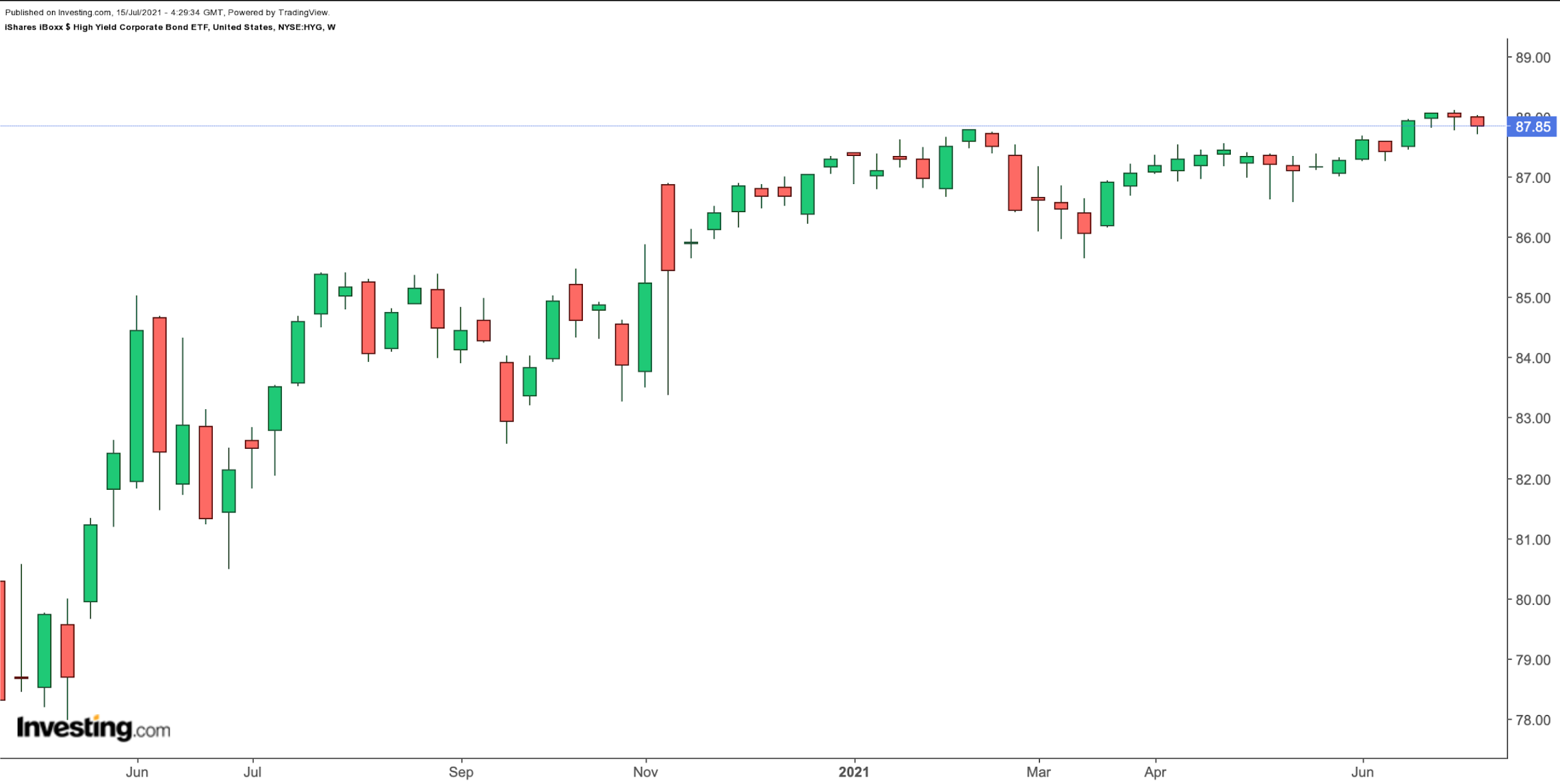As the earnings season gets under way, many readers may be wonder if the wobbly price action in equity markets could continue into late summer. As a result, interest in bonds, which typically have a low correlation to stocks, has been rising.
A discussion on bonds would not be complete without looking at the potential effects of interest rates. The SEC reminds investors:
“A fundamental principle of bond investing is that market interest rates and bond prices generally move in opposite directions. When interest rates rise, prices of fixed-rate bonds fall. This phenomenon is known as interest rate risk."
The U.S. currently has record-low interest rates. However, given the recent inflationary pressure, the Fed could start increasing rates. Yet, many analysts wonder whether the Fed is ready to take that step.
Meanwhile, recent trading action, especially last week, saw the U.S. 10-year Treasury yield decline to the current level of about 1.39. In May, it was shy of 1.7. In other words, despite the recovery in the U.S. economy as well as increasing inflation, the 10-year Treasury yield has been falling.
To put rates in perspective, readers might be interested to know that in January 2017, the yield was hovering around 2.5. In March 2020, when the pandemic started making headlines in the U.S., it rapidly fell towards the 0.6 level.
As yields are inversely related to bond prices, when discussing bonds, headlines usually refer to bond yields, as in "bond yields rose yesterday," rather than highlighting bond prices, as in "bond prices fell." Such a focus on yields enables investors to compare bonds with different maturities and coupons more easily.
Here is a bond exchange-traded fund (ETF) that might appeal to a range of market participants.
iShares iBoxx $ High Yield Corporate Bond ETF
Current Price: $87.85
52-Week Range: $82.03 - $88.10
Yield: 4.44%
Expense Ratio: 0.48% per year
The iShares iBoxx $ High Yield Corporate Bond ETF (NYSE:HYG) tracks the Markit iBoxx USD Liquid High Yield Index comprised of U.S. dollar-denominated, high-yield corporate bonds. The fund started trading in April 2007. Its net assets stand at $20.3 billion.

HYG currently has 1,302 holdings. Among the leading corporations whose bonds the fund holds are Clear Channel Outdoor Holdings (NYSE:CCO), Ford Motor (NYSE:F), Occidental Petroleum (NYSE:OXY), Bausch Health Companies (NYSE:BHC) and Centene (NYSE:CNC).
Exactly 55.05% of the bonds come from issuers with BB credit ratings. Next in line are B-rated issuers (31.94%) and CCC-rated (11.72%). In other words, these issuers are not necessarily high quality, and may even come with default risk. As a result, the ETF offers a high yield as compensation for taking on such elevated credit risk.
The fund’s top 10 holdings are fairly well-known businesses and account for 4.4% of the fund. In terms of the sub-sectoral breakdown, the consumer cyclical sector makes up the highest portion, with 19.53%; followed by the communications and the consumer non-cyclical sectors, with 18.62% and 14.60%, respectively.
In terms of maturities, the fund seeks a breakdown that concentrates in the 0-10-year period. The weighted average maturity period of the ETF is 3.67 years. Understandably, unlike an individual bond, a bond ETF does not mature. Fund managers typically keep this average maturity by continually buying and selling bonds.
The effective duration of the fund is 3.58 years. In other words, if interest rates were to rise by 1%, the value of the portfolio would roughly fall by 3.58%.
Over the past year, HYG is up 6.9% and is currently hovering at multi-year highs. This means investors have been happy to bid prices higher as they perceive value in such corporate bonds with low quality ratings.
If interest rates stay low, investors in an ETF like HYG could easily continue to enjoy the high return offered by the fund. However, if the next move in interest rates is up, then the outlook for HYG could also change easily.
